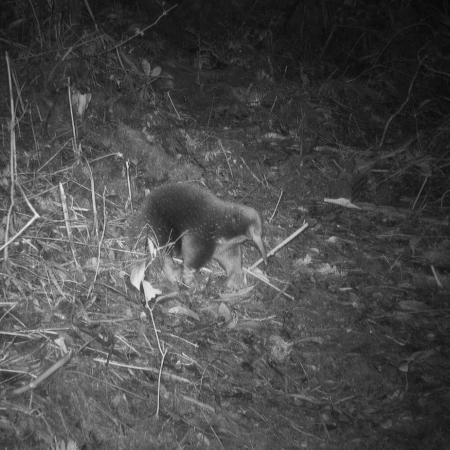Dr James Kempton’s expedition rediscovers egg-laying mammal unseen by science for 60 years
An international research expedition team set up by Dr James Kempton (2011) has recently rediscovered Attenborough’s long-beaked echidna (Zaglossus attenboroughi), a nocturnal, egg-laying mammal unseen by science since 1961. The expedition took place in Indonesia’s Cyclops Mountains in the Province of Papua and involved academics from Oxford and other UK universities, Cenderawasih University (UNCEN), Papua BBKSDA, and Indonesian NGO YAPPENDA, working closely with local customary landowners.
Recorded by science only once in 1961, Attenborough's long-beaked echidna is a monotreme: an evolutionarily distinct group of egg-laying mammals that includes the platypus. This echidna species is so special because it is one of only five remaining species of monotremes, the sole guardians of the unique and fragile evolutionary history of this remarkable branch of the tree of life. Echidnas are notoriously difficult to find since they are nocturnal, live in burrows, and tend to be very shy. Attenborough's long-beaked echidna has never been recorded anywhere outside the Cyclops Mountains, and is currently classified as Critically Endangered on the IUCN Red List of Threatened Species.
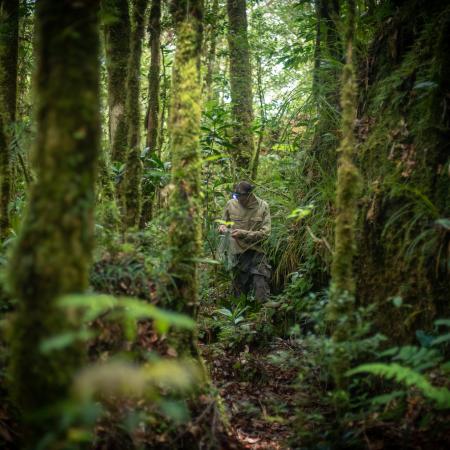
The Cyclops Mountains are one of the most inhospitable regions in the world, being rugged, steep, and dangerous, and ranging from sea level to 1,970 metres. They are a Key Biodiversity Area, meaning that they are critical to the persistence of biodiversity and to the overall health of the planet. The community of Yongsu Sapari have lived in the region for eighteen generations and hold the land as sacred. They believe it is stewarded by a female spirit who can take the form of a tree-kangaroo.
To find the echidna, the team deployed over 80 trail cameras, making multiple ascents of the mountains, and climbing more than 11,000 metres (more than the height of Everest) in the process. For almost the entire four weeks that the team spent in the forest, the cameras recorded no sign of the echidna. On the last day, with the last images on the final memory card, the team obtained three shots of the elusive mammal – the first ever photographs of Attenborough's echidna.
‘The discovery is the result of a lot of hard work and over three and a half years of planning,’ James explains. ‘A key reason why we succeeded is because, with the help of YAPPENDA, we have spent years building a relationship with the community of Yongsu Sapari, a village on the north coast of the Cyclops Mountains. The trust between us was the bedrock of our success because they shared with us the knowledge to navigate these treacherous mountains, and even allowed us to research on lands that have never before felt the tread of human feet.’
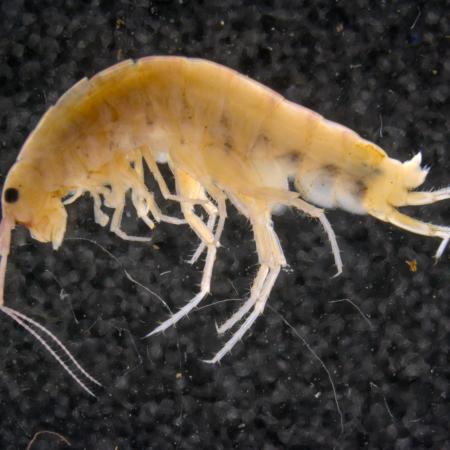
By combining scientific techniques with the Papuan team members’ experience and knowledge of the forest, the team made many other remarkable discoveries. These included Mayr's honeyeater (Ptiloprora mayri), a bird lost to science since 2008; an entirely new genus of tree-dwelling shrimp; countless new species of insects; and a previously unknown cave system. This was despite the difficulties posed by extremely inhospitable terrain, including venomous animals, blood-sucking leeches, malaria, earthquakes, and exhausting heat.
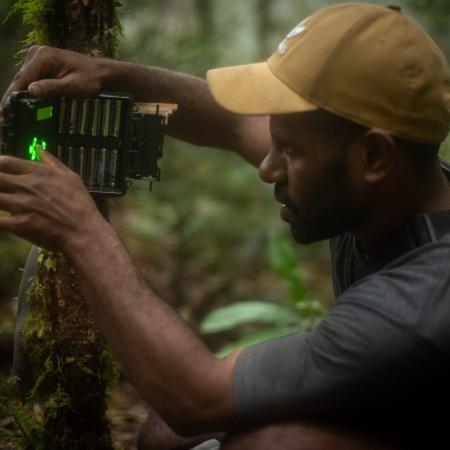
Rediscovering the echidna is only the beginning of the expedition's mission. Attenborough's long-beaked echidna is the flagship animal of the Cyclops Mountains and a symbol of its extraordinary biodiversity. The team hope that its rediscovery will help bring attention to the conservation needs of the Cyclops, and Indonesian New Guinea more generally, and they are committed to supporting long-term monitoring of the echidna. Key to this work is NGO YAPPENDA, whose mission is to protect the natural environment of Indonesian New Guinea through empowerment of Indigenous Papuans. As part of the expedition team, members of YAPPENDA helped train six students from UNCEN in biodiversity surveys and camera trapping during the expedition.
With the team having only sorted a fraction of the material collected on the expedition, they expect that the coming months will yield even more new species. The intention is to name many of these after the Papuan members of the expedition.
Besides animal specimens, the team also collected over 75 kg of rock samples for geological analysis, which was led by the expedition's chief geologist, Max Webb, from Royal Holloway University, London. These could help answer many questions about how and when the Cyclops Mountains originally formed. The mountains are believed to have formed when an island arc in the Pacific Ocean collided with the New Guinea mainland about 10 million years ago. Combined with the biological findings, this geological work will help the team understand how the extraordinary biodiversity of the Cyclops came to be.
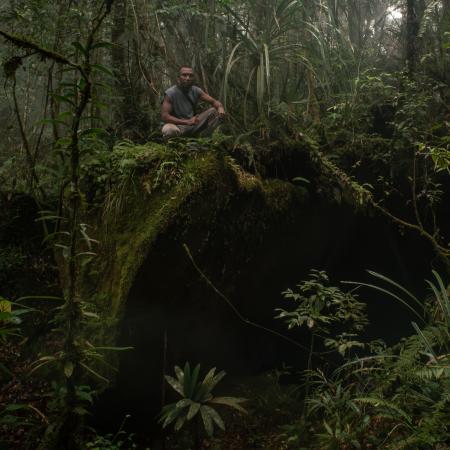
This rediscovery was made possible in part by the generous support of donors to Merton College Oxford, the Royal Geographical Society, the Scientific Exploration Society, Re:wild, Royal Holloway University, the University of Oxford, Reconyx, and private donations from Derek Williams, Chris Peri, and other generous individuals.
Academics who collaborated closely on the expedition include Dr James Kempton (University of Oxford), Dr Leonidas-Romanos Davranoglou (Oxford University Museum of Natural History), Madeleine Foote (University of Oxford), Dr Andrew Tilker (Re:wild, Leibniz Institute for Zoo and Wildlife Research), Dr Attila Balázs (Mendel University) and Dr Max Webb (Royal Holloway, University of London).
Cenderawasih University (UNCEN) team members and partners include Dr Suriani Surbakti, Gison Morib and Heron Yando.
Team members and collaborators from Indonesian NGO Yayasan Pelayanan Papua Nenda (YAPPENDA) include co-founders Iain and Malcolm Kobak, and Yali Kobak, Sampari Kobak, Ezra Daniel, Ruben Penggu, Melias Heluka, Yuanis Yalak and Sili Yalak.
The team obtained permits from Papua BBKSDA and BRIN. They were also given permission from the community of Yongsu Sapari to conduct research and collect specimens on their land during the expedition.
The findings have been reported in numerous newspapers and media, including the BBC and The Guardian.
